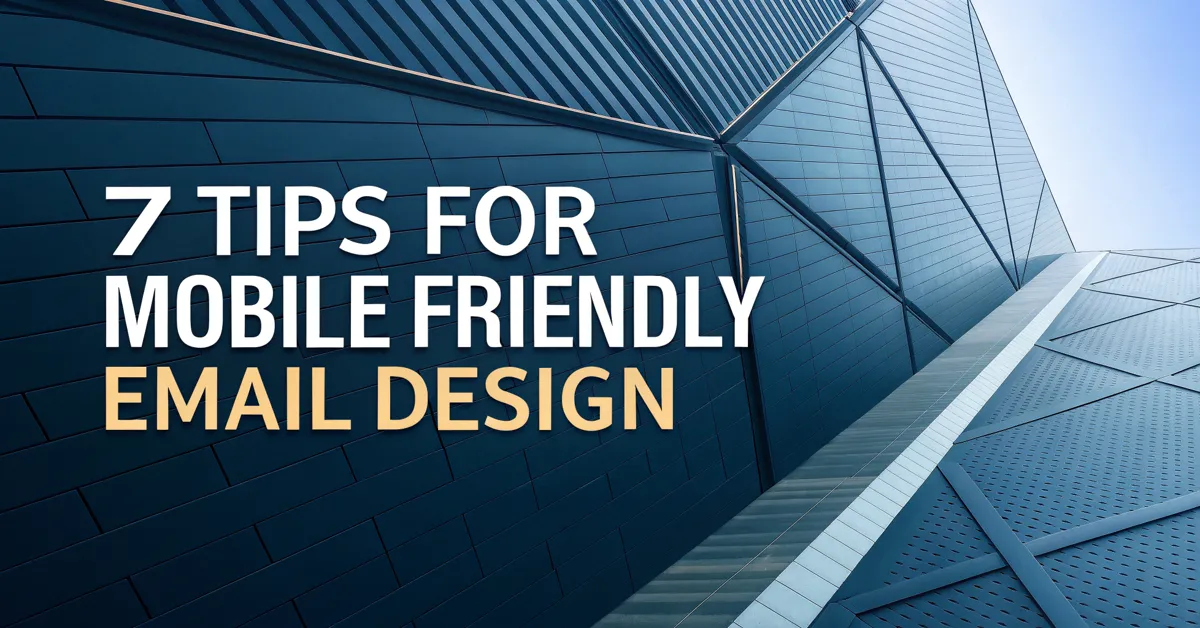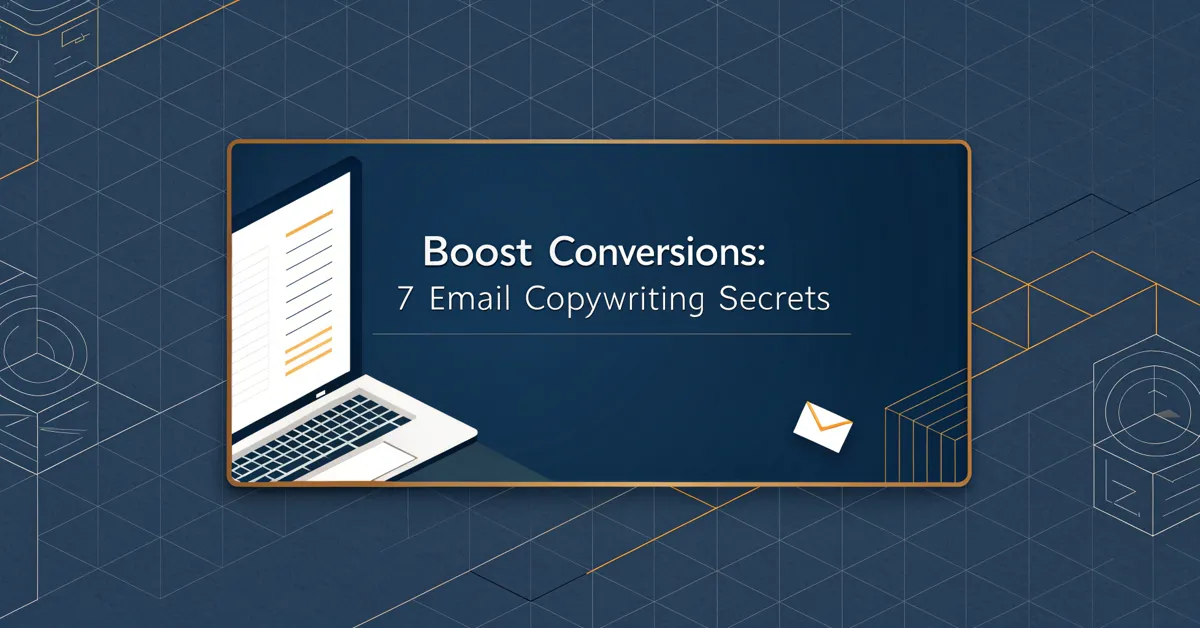Is your email marketing strategy stuck in the past? Are you losing potential customers because your emails look broken on their phones? You’re not alone. Many marketers struggle to adapt to the mobile-first world. But here’s a truth: if your emails don’t look good on mobile, they may not get read at all. This article will give you seven tips to make your email designs shine on any screen, and help you reach your goals.
Why Mobile-Friendly Email Design Is a Must
It’s not just about being current; it’s about reaching people where they are. More than half of all emails are now opened on mobile phones. If your emails are hard to read, slow to load, or display poorly, you risk losing your audience’s attention. They may even unsubscribe. A poor mobile experience can harm your brand’s image. Mobile-friendly email design is no longer a plus; it’s a basic must. It’s the same as having a website that works well on phones. If your site looks bad, people leave. Same with emails.
7 Tips for Mobile-Friendly Email Design
Here are seven key tips to make your emails work well for mobile users:
1. Use a Responsive Email Template
A responsive email template changes based on the screen it’s shown on. It shifts, stacks, and resizes elements to fit the device. This means your emails will look good no matter what phone, tablet, or screen your audience uses. This is key for a smooth view. Here’s what happens with a template that is not responsive: text too small to read, images not sized right, and links that are too close to click easily. People won’t bother to deal with that. You need to make it easy for them. This is where responsive design shines, making sure emails work and look good on any device. With a responsive template, you can create one email that works for everyone. No more extra work to check it on different devices. There are many good email marketing platforms that offer these templates. Look for one that you like to help make your work a breeze. These templates often come with a preview tool to check how it looks on phones. This way, you can test and fix things before you send them out.
2. Single Column Layout
Think about how you read a web page on your phone. Usually, the text flows from top to bottom in one column. Emails should be the same. A single-column layout makes it easy for people to scan and read your message without having to zoom in or move around. It keeps your text clear and easy to grasp. Forget sidebars or a multi-column design that can look cramped on a small screen. A single column layout gives the text space to breathe, making it simple for readers. This helps them understand your message without any added effort. This format is easy to read and great for keeping your readers engaged with what you have to say.
3. Use Large, Easy-to-Read Fonts
Tiny text is hard to read on any screen, but it’s even worse on a mobile device. Use font sizes that are large enough to read with no effort. Aim for at least 14px for body text, and go up to 22px for titles. Choose fonts that are easy to read, too. Stay away from odd or fancy fonts that might not look right on all devices. Simple fonts, like Arial, Verdana, or Open Sans, work well. They are clear, clean, and look good. The main goal is to make sure your emails are easy to read. People don’t like to strain their eyes. And if your message isn’t easy to read, people may not bother with it.
4. Optimize Images for Mobile
Big images can make your emails slow to load. This is not good, especially for those who are on the go. Optimize all the images in your emails to make the file size small without losing too much quality. Tools like TinyPNG and ImageOptim can do that. These tools make your images smaller without a big loss in how they look. Also, think about the image size you use. Big, wide images may not fit well on a phone screen. Make sure you choose images that work on mobile. You should test these images on a phone to be sure they look right. And don’t forget to use alt text for every image, in case they do not load. Alt text is the words that show up if an image can’t. This can help people know what the image is. It’s also good for people who use screen readers.
5. Keep Text Short and Sweet
People scan emails on their phones. They do not often have time to read long paragraphs. Be clear with what you want to say. Keep the text to the point. Use short paragraphs and lists to make it easy to read fast. Highlight key points with bold or italic text. This will draw people’s eyes to the most important things. Make sure your message is easy to grasp without having to read a lot of text. This way, people will get the key info quickly and easily.
6. Make Buttons Big and Easy to Click
Links that are too small are hard to click on a phone screen. Make sure the buttons in your emails are big enough for people to tap with their fingers. It helps to have at least 44×44 pixels for button sizes. Also, give them enough space around them so people do not tap the wrong link by accident. Use bright colors that pop out. This makes them easy to spot and use. Make it easy for people to click your buttons. A call-to-action button needs to stand out. If you make it hard to click, people may just give up.
7. Test Your Emails on Different Devices
Before you send out your emails, test them on many different phones and email apps. Use the test options in your email marketing tool to check how they look on mobile. Send test emails to your own phone. Then, use a service such as Litmus or Email on Acid. These services let you see how emails look on many devices. These tools allow you to fix issues before anyone sees them. Testing will show you how your emails look in different places. Pay close attention to text size, image views, and the space around your buttons. Testing is key to ensure your emails work right on every screen.
Why Mobile-Friendly Design Leads to Success
Mobile-friendly email design can do more than make emails look good. It can improve your email results. Here’s how:
Better Open Rates: When emails look good on phones, people are more likely to open them. If an email looks broken when it first opens, it doesn’t get read. If it looks good, it will. Mobile-friendly design makes sure that your emails are easy to read. This makes people want to open your emails.
More Clicks: When buttons and links are easy to see and click, people are more likely to engage with your emails. They will visit your site. They will buy your product. If it’s easy to interact with, people do it more often. Clear and easy-to-use buttons mean more clicks. This means more traffic and sales for you.
Higher Conversions: Well-designed emails lead to more sales. When people are able to read your emails easily and get to the right links, you will convert more readers to customers. A good mobile design makes the whole buying process easy. You make it easy for people to do what you want them to do.
Better Brand Image: Emails that look good show you care about your readers. They see that you focus on making emails work well. This builds trust. It makes your brand look more professional. And when people trust your brand, they are more likely to be loyal to you. They will buy from you more.
Lower Unsubscribe Rates: People are less likely to unsubscribe when emails look good. No one likes emails that are hard to use. If your emails are not easy to deal with, people will choose to leave. Mobile design stops that. It will help you keep your audience engaged and stay in touch with them.
Common Mistakes to Avoid in Mobile Email Design
It’s easy to make errors when trying to make emails mobile-friendly. Here are some of the most common errors to avoid:
- Using Fixed-Width Templates: These templates do not change based on the screen size. Which means the emails may look bad on phones. Stay away from fixed width templates and use responsive ones.
- Tiny Fonts: Small fonts are hard to read on phone screens. Use large enough fonts to make sure people can read them with ease.
- Large Images: Big images can make your emails slow to load. Always optimize your images to get the file size down.
- Overly Complex Layouts: Multi-column layouts, sidebars, and too many elements in an email can make the view cramped. Keep the layout easy. Use a single column design for simple viewing.
- Small Links: Small links or buttons are very hard to tap on phones. Always use bigger buttons with enough space around them.
- No Testing: Sending emails without testing first is a big risk. Always test emails on different phones to make sure they look good.
Tools for Better Mobile Email Design
There are many tools to help improve your email design. Here are a few of the best:
Email Marketing Platforms: Many platforms, such as Mailchimp, HubSpot, and ConvertKit, have responsive email templates and easy-to-use tools for making emails. They often give pre-made designs that you can use right away. They also let you check your email before you send it out. These platforms make the job easy and help save time.
Litmus and Email on Acid: These are email testing tools. They show you how your email looks on different phones, browsers, and email apps. This lets you check for design problems and fix them. They are a key part of a good design process.
Image Optimization Tools: Tools like TinyPNG and ImageOptim make images smaller. This will make them load faster. They keep the quality high, but the file size small. They are important to any mobile email design.
Canva: This is a graphic design tool with many templates. You can use it to create graphics for your emails and social media content.
Google Fonts: This tool provides many free, easy-to-read fonts. You can use them to make your emails look great on all screens.
Takeaways: Designing for Mobile Success
Mobile-friendly email design is not just a trend. It’s key for success in email marketing. By using responsive templates, a single-column design, and large fonts, you can ensure your emails look good on all phones. Always make sure your links are easy to tap, the images are small enough, and the text is to the point. Test your emails before sending to make sure all elements work as they should. Do these things and you will make your emails a success. By caring for the mobile view, you will engage more readers. You will get more clicks. And you will grow your brand’s trust.
So, stop thinking about mobile-friendly design as a side task. Make it a must. The readers of your emails, and your conversion rates, will thank you for it.





